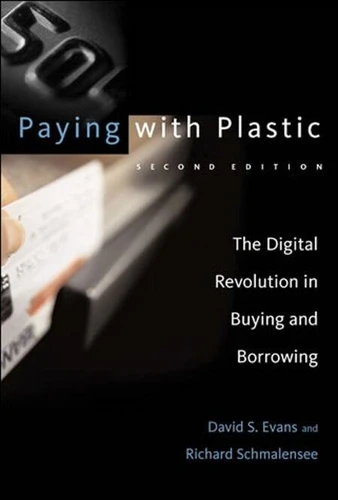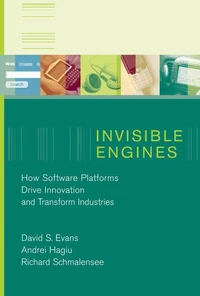Paying with Plastic, second edition. The Digital Revolution in Buying and Borrowing
Par : ,Formats :
Disponible dans votre compte client Decitre ou Furet du Nord dès validation de votre commande. Le format ePub protégé est :
- Compatible avec une lecture sur My Vivlio (smartphone, tablette, ordinateur)
- Compatible avec une lecture sur liseuses Vivlio
- Pour les liseuses autres que Vivlio, vous devez utiliser le logiciel Adobe Digital Edition. Non compatible avec la lecture sur les liseuses Kindle, Remarkable et Sony
- Non compatible avec un achat hors France métropolitaine
 , qui est-ce ?
, qui est-ce ?Notre partenaire de plateforme de lecture numérique où vous retrouverez l'ensemble de vos ebooks gratuitement
Pour en savoir plus sur nos ebooks, consultez notre aide en ligne ici
- Nombre de pages384
- FormatePub
- ISBN0-262-25052-7
- EAN9780262250528
- Date de parution17/12/2004
- Protection num.Adobe DRM
- Taille1 Mo
- Infos supplémentairesepub
- ÉditeurThe MIT Press
Résumé
The definitive account of the trillion-dollar payment card industry. The payment card business has evolved from its inception in the 1950s as a way to handle payment for expense-account lunches (the Diners Club card) into today's complex, sprawling industry that drives trillions of dollars in transaction volume each year. Paying with Plastic is the definitive source on an industry that has revolutionized the way we borrow and spend.
More than a history book, Paying with Plastic delivers an entertaining discussion of the impact of an industry that epitomizes the notion of two-sided markets: those in which two or more customer groups receive value only if all sides are actively engaged. New to this second edition, the two-sided market discussion provides useful insight into the implications of these market dynamics for cardholder rewards, merchant interchange fees, and card acceptance.
The authors, both of whom have researched the industry for more than 25 years, also examine the implications of the recent antitrust cases on the industry as well as other business and technological changes-including the massive consolidation brought about by bank mergers, the rise of the debit card, and the emergence of e-commerce-that could alter the payment card industry dramatically in the years to come.
More than a history book, Paying with Plastic delivers an entertaining discussion of the impact of an industry that epitomizes the notion of two-sided markets: those in which two or more customer groups receive value only if all sides are actively engaged. New to this second edition, the two-sided market discussion provides useful insight into the implications of these market dynamics for cardholder rewards, merchant interchange fees, and card acceptance.
The authors, both of whom have researched the industry for more than 25 years, also examine the implications of the recent antitrust cases on the industry as well as other business and technological changes-including the massive consolidation brought about by bank mergers, the rise of the debit card, and the emergence of e-commerce-that could alter the payment card industry dramatically in the years to come.
The definitive account of the trillion-dollar payment card industry. The payment card business has evolved from its inception in the 1950s as a way to handle payment for expense-account lunches (the Diners Club card) into today's complex, sprawling industry that drives trillions of dollars in transaction volume each year. Paying with Plastic is the definitive source on an industry that has revolutionized the way we borrow and spend.
More than a history book, Paying with Plastic delivers an entertaining discussion of the impact of an industry that epitomizes the notion of two-sided markets: those in which two or more customer groups receive value only if all sides are actively engaged. New to this second edition, the two-sided market discussion provides useful insight into the implications of these market dynamics for cardholder rewards, merchant interchange fees, and card acceptance.
The authors, both of whom have researched the industry for more than 25 years, also examine the implications of the recent antitrust cases on the industry as well as other business and technological changes-including the massive consolidation brought about by bank mergers, the rise of the debit card, and the emergence of e-commerce-that could alter the payment card industry dramatically in the years to come.
More than a history book, Paying with Plastic delivers an entertaining discussion of the impact of an industry that epitomizes the notion of two-sided markets: those in which two or more customer groups receive value only if all sides are actively engaged. New to this second edition, the two-sided market discussion provides useful insight into the implications of these market dynamics for cardholder rewards, merchant interchange fees, and card acceptance.
The authors, both of whom have researched the industry for more than 25 years, also examine the implications of the recent antitrust cases on the industry as well as other business and technological changes-including the massive consolidation brought about by bank mergers, the rise of the debit card, and the emergence of e-commerce-that could alter the payment card industry dramatically in the years to come.




